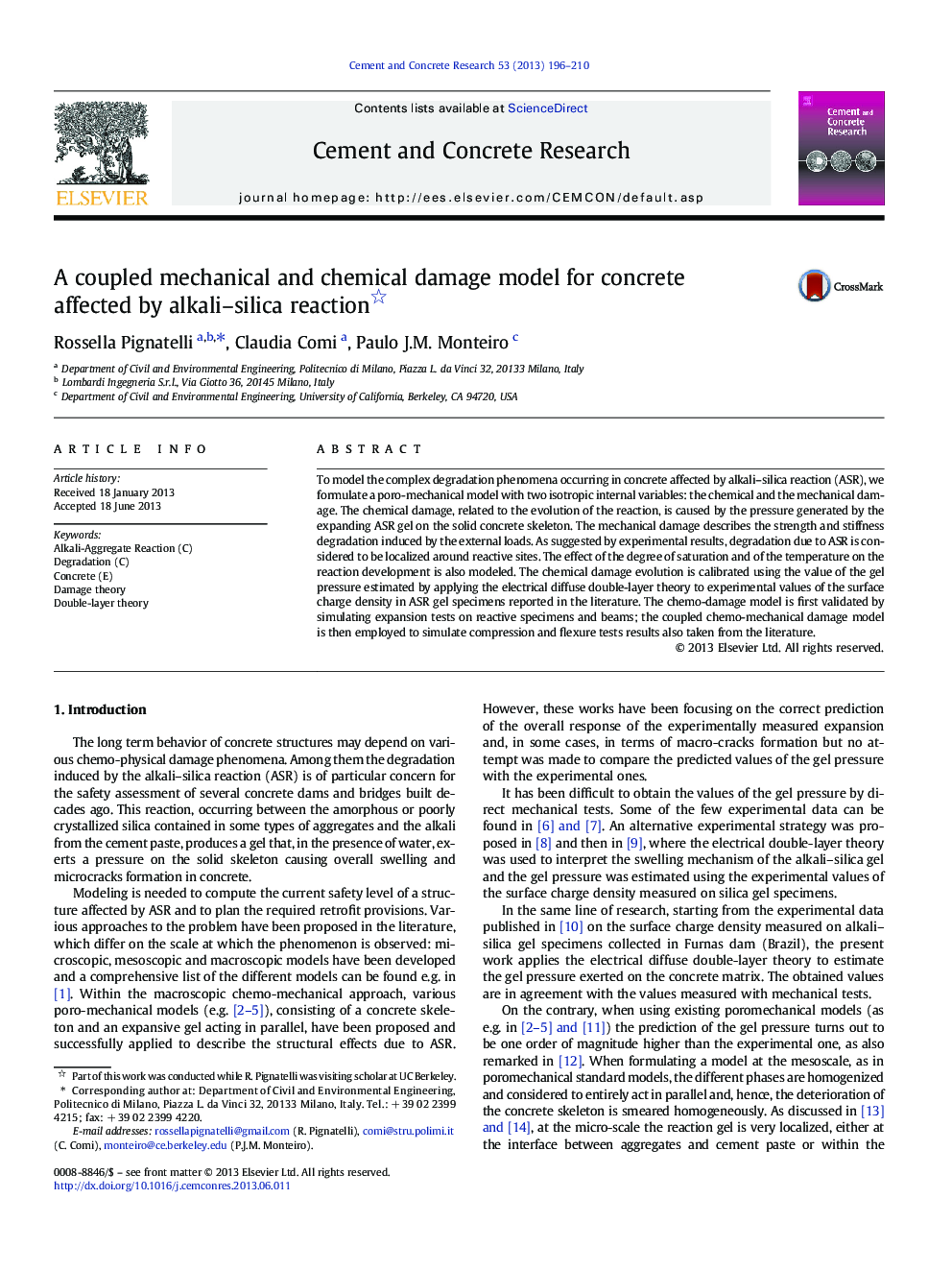| Article ID | Journal | Published Year | Pages | File Type |
|---|---|---|---|---|
| 1456423 | Cement and Concrete Research | 2013 | 15 Pages |
•Concrete degradation due to ASR in variable environmental conditions is modeled.•Two isotropic internal variables – chemical and mechanical damage – are introduced.•The value of the swelling pressure is estimated by the diffuse double layer theory.•A simplified scheme is proposed to relate macro- and microscopic properties.•The chemo-mechanical damage model is validated by simulating tests in literature.
To model the complex degradation phenomena occurring in concrete affected by alkali–silica reaction (ASR), we formulate a poro-mechanical model with two isotropic internal variables: the chemical and the mechanical damage. The chemical damage, related to the evolution of the reaction, is caused by the pressure generated by the expanding ASR gel on the solid concrete skeleton. The mechanical damage describes the strength and stiffness degradation induced by the external loads. As suggested by experimental results, degradation due to ASR is considered to be localized around reactive sites. The effect of the degree of saturation and of the temperature on the reaction development is also modeled. The chemical damage evolution is calibrated using the value of the gel pressure estimated by applying the electrical diffuse double-layer theory to experimental values of the surface charge density in ASR gel specimens reported in the literature. The chemo-damage model is first validated by simulating expansion tests on reactive specimens and beams; the coupled chemo-mechanical damage model is then employed to simulate compression and flexure tests results also taken from the literature.
